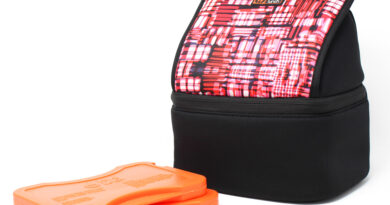
How Suboxone Benefits Both Body and Mind
 According to the Centers for Disease Control and Prevention, more than 75% of drug overdose deaths in 2021 involved the use of an opioid. With the ongoing opioid crisis, it’s important more than ever to seek immediate medical attention to address your ongoing addiction to prevent further deterioration of your health and the possibility of an overdose.
According to the Centers for Disease Control and Prevention, more than 75% of drug overdose deaths in 2021 involved the use of an opioid. With the ongoing opioid crisis, it’s important more than ever to seek immediate medical attention to address your ongoing addiction to prevent further deterioration of your health and the possibility of an overdose.
Suboxone as a part of a medication-assisted treatment can be your ally in this battle, offering benefits to both the body and mind. What is Suboxone good for? Find out here to determine if this is the right path to recovery for you.
Medical-Assisted Treatment
Medical-assisted treatment is an evidence-based treatment that combines medication with counseling and behavioral therapy to provide a whole-patient approach to recovery. By incorporating various aspects of care, the physical dependence and psychological factors are both addressed. These interventions will also improve a patient’s coping skills so that they can navigate through situations that may otherwise result in a relapse and promote long-term recovery.
There are many benefits of a Suboxone treatment program. What makes Suboxone effective compared to other MATs is its low abuse potential. Suboxone helps your body by reducing your withdrawal symptoms, and your mind by minimizing your cravings so you can focus on your recovery journey.
Enlisting the help of an addiction treatment center like Klinic.com allows you to create a sustainable addiction treatment plan that works for you. As long as you stick to the treatment plan and take the right dosage of Suboxone, you’ll be able to get out of the withdrawal phase and free yourself from your addiction.
Buprenorphine
The many benefits of Suboxone include binding the receptors in the brain the way full opioids do, but without the same euphoric effects. As a partial opioid agonist, the buprenorphine component of Suboxone helps to relieve withdrawal symptoms by producing a mild high that has a “ceiling effect.” The high you will experience is mild and will not increase despite increased dosage. It will help you get through withdrawal symptoms more comfortably, so you’ll feel better during the entire program.
Naloxone
It is difficult to get addicted and overdose on Suboxone because of its naloxone component. As an opioid antagonist, naloxone blocks the opioid from binding and prevents an overdose if Suboxone is misused. Some patients that misuse Suboxone do so to deal with their withdrawal, and not to get high. If this is the case, they need to go to the doctor for an adjustment of their dose.
Forms of Suboxone
Suboxone comes in two forms: tablets and strips that can be placed under the tongue (sublingual). The film can also be placed inside the cheek (buccal). This method ensures quick absorption of the medication in the bloodstream.
Phases of Suboxone
During the induction phase of Suboxone, your healthcare provider will inform you of the uses of Suboxone, closely monitor your treatment, and limit the prescription refill to encourage frequent check-ins. You’ll also experience side effects as your body adjusts to the medication. Once your withdrawal symptoms subside and you no longer experience cravings, you’ll go into the stabilization phase where the dosage and frequency of Suboxone will be adjusted. You will also be referred to counseling and therapy at this stage.
The last phase is the maintenance phase, during which you maintain a steady dose of Suboxone or taper off to a lower dose until it is no longer needed. Note that everybody’s journey to recovery is different. Some people will need to take Suboxone for a short period of time, while others will need to take it long-term. Some experts even recommend having long-term maintenance to lower the likelihood of a relapse. Many people can manage their responsibilities at home and at work, and enjoy healthy relationships while taking Suboxone for an extended period.
Choosing Suboxone for MAT is known to provide better long-term outcomes. Its dual action of overcoming withdrawal symptoms and lessening cravings allows you to maintain your normal, daily activities while detoxing from opioids. Since you won’t experience intense withdrawal symptoms, you can receive the treatment from the comfort of your own home instead of committing to an in-person facility.







